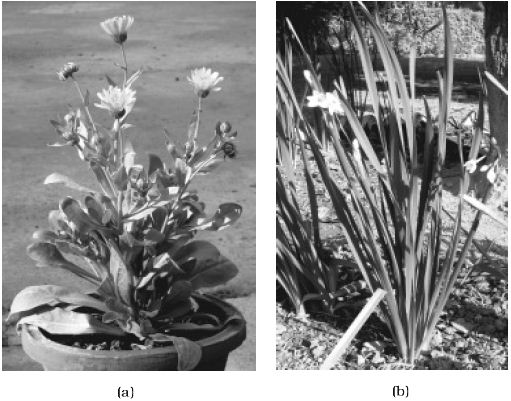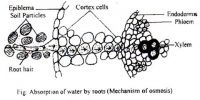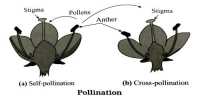In angiosperms, the seeds are enclosed by fruits. The angiosperms are an exceptionally large group of plants occurring in wide range of habitats. They range in size from tiny, almost microscopic Wolfia to tall trees of Eucalyptus (over 100 metres). They provide us with food, fodder, fuel, medicines and several other commercially important products. They are divided into two classes the dicotyledons and the monocotyledons (Figure).

Fig: angiosperms: (a) dicotyledon, (b) monocotyledon
The dicotyledons are characterized by having two cotyledons in their seeds while the monocolyledons have only one. The male sex organs in a flower are the stamen. Each stamen consists of a slender filament with an anther at the tip. The anthers, following meiosis, produce pollen grains. The female sex organs in a flower are the pistil or the carpel. Pistil consists of an ovary enclosing one to many ovules. Within ovules are present highly reduced female gametophytes termed embryo-sacs. The embryo-sac formation is preceded by meiosis. Hence, each of the cells of an embryo-sac is haploid. Each embryo-sac has a three-celled egg apparatus – one egg cell and two synerglds, three antipodal cells and two polar nuclei. The polar nuclei eventually fuse to produce a diploid secondary nucleus. Pollen grain, after dispersal from the anthers, is carried by wind or various other agencies to the stigma of a pistil.
This is termed as pollination. The pollen grains germinate on the stigma and the resulting pollen tubes grow through the tissues of stigma and style and reach the ovule. The pollen tubes enter the embryo-sac where two male gametes are discharged. One of the male gametes fuses with the egg cell to form a zygote (syngamy). The other male gamete fuses with the diploid secondary nucleus to produce the triploid primary endosperm nu dens (PEN). Because of the involvement of two fusions, this event is termed as double fertilization.












